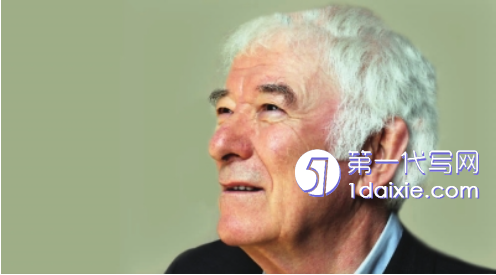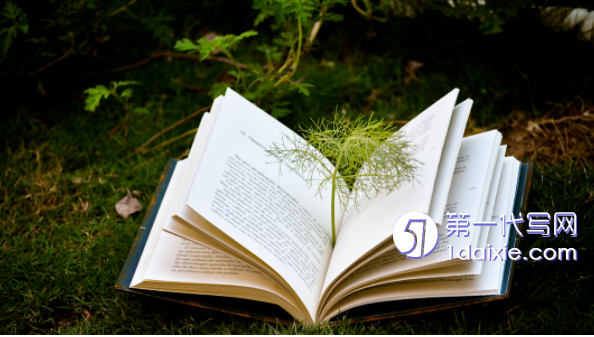本文是一篇英语论文,笔者通过关注不同处境、不同群体以及广阔关系网中的身体,希尼探索了身体的伦理和美学意义,展现出人文主义和世界主义的视角以及一位扎根于生活世界的诗人的敏锐感受力,为我们打开了认识身体、认识自我、认识世界的新视野。
Chapter One The Body:A Theoretical Framework
1.1 The Body and Body Studies

Our basic understanding of the body is the living,perceivable and mortal humanbody.Before entering the academic interpretation of the body,it is necessary to traceand clarify its concept through the etymological scope.
“Body”stems from Old English“bodig”,corresponding to Old High German“botah”(Hoad,1996:44).In modern English,it has multiple meanings.For example,in Metaphysics,it means the body which has sensible qualities,or is perceptible bythe senses(OED).The basic meaning refers to the physical structure of a human oranimal including the flesh,the bones and the organs.In this thesis,we will restrict ourdiscussion of“body”to the concept concerning the human body.In English,apartfrom“body”,there are words semantically related to it,such as“flesh”,“soma”and“corporeal”,the differences among whom are subtle and need further explanation.
According to the Oxford English Dictionary,“flesh”emphasizes the tangible andsubstantial material of the human body between skin and bones;“soma”emphasizesthe body of an organism in contrast to the germ-cells;“corporeal”highlights thetangible body which is not spiritual.These words are frequently encountered in bodystudies and apart from their dictionary meanings,the interpretation and reference canvary according to the specific context.
1.2 Essential Dimensions of the Body
It is widely admitted that the body is not merely a biological object andsubstance,it has anthropological,social,cultural and political dimensions.Althoughsome scholars have warned that because of the mutability and conceptual flux of thebody,it“is notoriously difficult to theorize or pin down”and“resists conceptualdefinition”(Hillman and Maude,2015:1),for our study of the body in literary works,it is still necessary to investigate and clarify some essential dimensions of the body inabundant studies.This part briefly introduces theories concerning the body from thesynthesized,the sociological and the phenomenological dimension,which arebeneficial to the study of Heaney’s later body writing.
1.2.1 Synthesized Dimension of the Body
Emphasizing the irreducibility of the body,Mark Johnson provides a holisticscope of the dimensions of the body in The Meaning of the Body:Aesthetics ofHuman Understanding(2007).He summarizes five dimensions of the body,which “cannot be reduced to any one(or two or three)of them”(Johnson,2007:278).
The first dimension is the“body as biological organism”(275),which isexplained by the dictionary meaning of“soma”,emphasizing the life-sustainingbiophysical nature of the body.This dimension is the most fundamental one as itprovides a substantial ground for other dimensions.The second is the“ecologicalbody”,which takes its roots in the everlasting system of the organism-environmentand is in interaction with other organisms in the natural world.Next comes the“phenomenological body”,which is“the living,moving,feeling,pulsing body of ourbeing-in-the-world”(276).In this dimension,where the proprioception is central tothe kinaesthetic experience of our bodies,we enter the world through moving andsensing our bodies.
Chapter Two The Ethical Connotations of the Body inSocial Relations
2.1 Humanitarian Reflection on the Victim’s Body in Violence
As is shown in body studies,the most basic attribute of the human body is itscorporeality,the venerability and mortality of the body made up of flesh and blood.The material body or the body as biological organism is the lived body that“myworld extends out from”(Johnson,2007:275).The common corporeality exposesindividuals’existential limitedness and also constitutes one of the crucial scales tomeasure the existential conditions of human beings.
Violence is one of the most severe threats of human beings in history and thecontemporary world,where the body bears the brunt of physical damage.In Violence:Six Sideways Reflections(2008)SlavojŽižek distinguishes two major forms ofviolence—subjective and objective violence.The former stands for the direct physicalpractices of violence including crime,terror and massacre,which is“all-too-visible”(Žižek,2008:2).The latter,contrary to the former,is often invisible and isrepresented by racism,hate-speech and discrimination.Besides,subjective violenceincludes two notable kinds of objective violence:one is inherent in language and itsforms or in other word,the semiotic system;the other is the systemic violence,whichis deeply rooted in ideology and takes on the form of“the often catastrophic consequences of the smooth functioning of our economic and political systems”(2).InŽižek’s view,subjective violence is a kind of pure violence,which in its essence isa“perturbation of the‘normal’,peaceful state of things”(2).From his investigationof violence,it can be seen that subjective violence often implies objective violence.Inthis respect,the corporeal victims of various forms of subjective violence are usuallyimprinted by objective violence and thus bear symbolic meanings behind therepresentation.
2.2 The Ethics of Care Embedded in the Body of the Old
Ageing is a natural process which is every mortal human’s destiny.In ourcommon sense,ageing is characteristic of the deterioration of the bodily functionsand the increasing risk of getting diseases,which is a long-term battle both physicallyand mentally.French philosopher Simone de Beauvoir studies old age in The Comingof Age(1970)in the social-cultural scope.In the first place,she has recognized thedifficulty of making definition or setting boundary of“old age”.Historically andculturally,there is no commonly acknowledged starting point of old age.Scientifically,there are two kinds of age:the chronological age counted from thebirthday and the biological age measured by biological science.The two“do notalways coincide”(Beauvoir,1972:30)and could vary based on individualdifferences,which means that a person in physiological examination may prove to bemore healthy and younger than his chronological age.
Beauvoir argues that old age“is not solely a biological,but also a cultural fact”(13).The definition of old age bears value judgement in different social contexts.Akey point in her study is that old age is related to the dialectical relationship betweenthe self and the other.She believes that“old age is more apparent to others than to thesubject himself”(284)and by being aware of others,the subject comes to knowhimself.Thus the aged subject is established through an outsider,that is,the other.The exterior gaze,observation and judgement also form the origin of the alienation of the old,who,being objectified in the other’s eyes,cannot experience old age in theirpure subjectivity.
Chapter Three The Perceptional Experience of the Body in Relation tothe Non-living..............................63
3.1 Perceiving the Thing:The Body-Thing Affinity...............................64
3.2 Perceiving the Natural World:The Sense of“In-Placeness”........................75
Chapter Four The Poetics of Heaney’s Later Body Writing....................85
4.1 Musicality of the Body Writing:Feeling the Bodily Rhythm.......................86
4.2 Dynamic Perspective:Exploring the Possible Body through Imagination...91
Conclusion.................................102
Chapter Four The Poetics of Heaney’s Later Body Writing
4.1 Musicality of the Body Writing:Feeling the Bodily Rhythm
As a poet,as written in“Personal Helicon”,a manifestation of his poet’svocation,Heaney devotes himself to“rhyme”to see himself and“to set the darknessechoing”(Heaney,1966:46).This impulse to“rhyme”is explained later in his NoblePrize lecture“Crediting Poetry”,in which he traces his journey of language all theway back to the inspiration of the radio sound in childhood.He notes that although hecould not understand the flow of foreign languages on the radio,he still honours thewideness that language invites him into(Heaney,1996:9).The wideness he finds inspoken language is largely physical,or more precisely,auditory.
In his essay“Learning from Eliot”,Heaney regards T.S.Eliot as his teacher ofthe poetic sound,from whom he learned“the right way to listen”(Heaney,2002:39).He claims that“From the start something in my make-up was always ready to followthe antique flute of sensuous writing”(31).For Heaney,first and foremost,“sensuouswriting”is sensuous especially in terms of the musicality of the poetic language.Asthe most musical literary genre,poetry originates from oral songs.As T.S.Eliotreveals about the origin of poetry,“Poetry begins,I dare say,with a savage beating adrum in a jungle,and it retains that essential of percussion and rhythm”(Eliot,1933:155).The drumbeat highlights the musicality of poetry,which constitutes its essentialcharacteristics.From the drumbeat,which is generated by the bodily movement andrhythm,flows out the very primitive poetical urge,which finds its home in language.

Conclusion
As one of the major English poets in the twentieth century and a prestigious poethonoured worldwide,Seamus Heaney has devoted his lifetime to poetry and touchedthe readers with his exquisite language,which explores the genuine experience in ourlife.With broadened life experience and literary practice,late Heaney probes deeplyinto the contemporary world,addressing a wider scale of issues and developing newmethods in form and content.His later five volumes cover some of the earlier focuseson nature,memory,family,Northern Ireland issues and also show great concern forindividuals’particular experience in the social and natural environment in the latetwentieth and early twenty-first century.The body writing in his later poetry mirrorshis artistic pursuit in exploring the complexity of human and the vocation of a poetwho is always prepared to respond to the world.
In the social-cultural scope,the vulnerable bodies in both the public and thedomestic sphere convey ethical messages.The victim’s body in violence manifests hishumanitarian call for justice and peace.The embodied experience of the old reveals acherished ethics of care in family,which tightens the family bond and helps the oldsurvive alienation and isolation.Through these bodies,Heaney bridges the personalwith the collective,the past with the present and the future,reflecting a poet’s artisticresponsibility for human well-being in the modern age.
reference(omitted)
